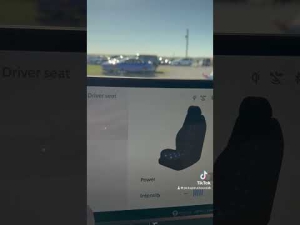What Is Electronic Stability Control and How Does it Actually Work?
We’ve all had it happen. Rainy night, headlights barely cutting through the haze, when suddenly you’re facing the headlights of the car behind. Odds are, despite the panic and intensity of the moment, you managed to look like a drift hero and save yourself a trip to the body shop. Odds are even better you saw the dash light up like a Christmas tree when it happened. That light was your car telling you the stability control saved the car, and maybe not you. It’s also one of the most important aspects of car safety today.
What on earth is stability control?
Stability control has been around since the mid-90s, and the world is better for it. In layman’s terms, it’s a series of electronic systems that tells the computer in your car, called the ECU, when you might be having a massive accident. These systems rely on a series of wires that run to and from the brakes, wheels, and other points in the car; where they monitor pitch and roll.
Said wires will detect which wheels are slipping and when, and add or remove power to keep you pointed straight ahead. These sensors will also detect how much pitch (up and down) and roll (side to side) is occurring in the car at a point in time. It’s a helpful trick to have, but stability control should never be more than a backup. If you want to avoid getting unintentionally, a good set of rubber is the best thing for it.
What about traction control?

RELATED: Are More Expensive Tires Actually Better?
But how does a car get to a point where stability control is needed? Simply put, that means there’s wheel slippage in one direction or another. Wouldn’t it be helpful if there were also a way to detect said slip as it was happening? That’s where traction control comes in. Traction control, or TCS, as it is often called, detects wheel spin and nothing else, unlike stability control.
Traction control is what you feel when trying to get going on a snowy hill. If the vehicle detects wheels a-spinning, the car will cut power by X% to those wheels until they have more traction, then get you going. Safety systems like TCS are also pretty useful in sports cars. There it helps to reign in the absurd amount of power in cars like the Mclaren 765LT; a near 800 hp car MotorTrend called “fast”.
Should you turn these systems off?

In a word, NO. Do not turn TCS or stability control off in any situation unless on a closed course. Even then, it’s best to be certain you know what to do before you get sideways. Plenty of racing schools will show you how, so keep it off the street; there’s a reason that car you saw at Cars and Coffee went into a guardrail. Don’t be that guy. However, should you know what to do, it’s hard to have more fun in a car on a closed course. Just make sure not to end up on YouTube.
The post What Is Electronic Stability Control and How Does it Actually Work? appeared first on MotorBiscuit.







